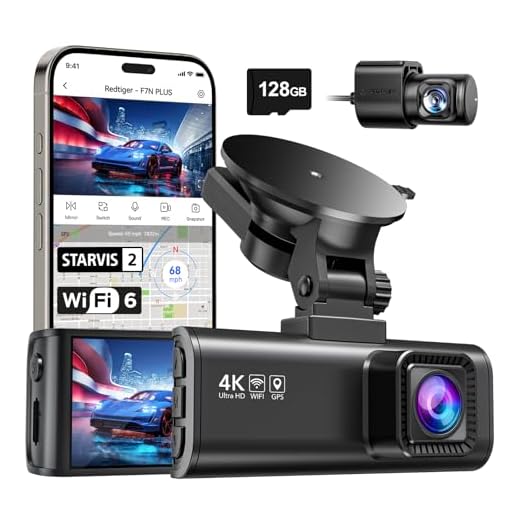




Security cameras have become ubiquitous in our modern world, monitoring and recording activities in various public and private spaces. One question that often arises is whether security cameras can see into cars, capturing what goes on inside these enclosed vehicles.
While security cameras are designed to provide surveillance and monitoring of an area, their ability to see into cars depends on several factors, including the positioning of the camera, the type of camera lens, and the tint or reflective properties of the car windows.
Some security cameras may have the capability to see into cars if they are positioned strategically or have specialized lenses that can capture images through glass surfaces. However, most standard security cameras are not designed to see into cars unless they are specifically placed to do so.
Can Security Cameras See into Cars
Security cameras are designed to monitor and record activities in a specific area for security purposes. However, the ability of security cameras to see into cars depends on various factors such as camera placement, angle, and type of camera.
Factors Affecting Visibility
Indoor security cameras positioned near windows or glass doors may have a limited view inside a parked car due to reflections and glare. Outdoor security cameras mounted high above may not capture detailed images inside cars parked close to the building.
Angle and Distance: Security cameras with adjustable lenses can be positioned to focus on specific areas, including vehicles. Cameras placed at a downward angle towards parking spaces can provide a better view inside cars.
Camera Type: High-resolution cameras with zoom capabilities can capture clear images inside cars, while standard fixed-lens cameras may struggle to provide detailed footage.
Privacy Concerns
While security cameras may have the potential to see into cars, it is essential to consider privacy issues. Recording activities inside private vehicles without consent may raise legal and ethical concerns.
Always consult local laws and regulations regarding the use of security cameras to ensure compliance with privacy guidelines.
Understanding the Technology
Security cameras use various technologies to capture images and videos. Most modern cameras use high-resolution sensors to produce clear footage. These sensors can see into cars through windows, but the quality of the image may vary depending on factors like lighting and the angle of the camera.
Some cameras also come equipped with infrared technology, allowing them to capture images in low-light or nighttime conditions. This means that even in the dark, security cameras may still be able to see into cars parked outside.
Potential Privacy Concerns
While security cameras can provide a sense of safety and security, they also raise potential privacy concerns, especially when it comes to monitoring activities inside vehicles. Some people may feel uncomfortable knowing that their movements and conversations inside a car could be captured on camera without their consent.
Additionally, if security cameras are improperly positioned or have the ability to zoom in on vehicles, there is a risk of capturing sensitive information such as license plate numbers, personal belongings, or even credit card information. This data could potentially be misused or fall into the wrong hands, leading to privacy breaches or identity theft.
Legal Implications
When it comes to security cameras viewing into cars, there are several legal implications to consider. In many jurisdictions, the privacy rights of individuals inside their vehicles are protected by law. This means that using security cameras to monitor or record activities inside vehicles without consent may be considered a violation of privacy laws.
It is important for businesses and individuals to understand the laws and regulations regarding the use of security cameras in and around vehicles. Failure to comply with these laws can result in legal consequences, including fines and lawsuits. It is advisable to consult with legal experts to ensure that security camera systems are installed and used in compliance with relevant laws and regulations.
Best Practices for Car Security
When it comes to keeping your vehicle safe, there are several best practices you can follow to enhance car security:
- Always lock your car doors and windows when you leave the vehicle.
- Avoid leaving valuables in plain sight inside the car.
- Park in well-lit areas or monitored parking lots.
- Install a car alarm system or a steering wheel lock for added security.
- Consider using a steering wheel lock or a gear shift lock to deter thieves.
- Use security cameras or dash cams to monitor your vehicle when parked.
- Keep your keys secure and never leave them in the ignition.
- Be aware of your surroundings and report any suspicious activity to authorities.
By following these best practices, you can reduce the risk of car theft and ensure the safety of your vehicle.
Benefits of Car Surveillance
Car surveillance systems offer a range of benefits for vehicle owners and businesses. Here are some key advantages:
Enhanced Security
Security cameras in cars can help deter theft and vandalism. They provide a visual record of any incidents that may occur, making it easier to identify and apprehend perpetrators.
Vehicle Tracking
Car surveillance systems can also be used for tracking the location and movement of vehicles. This is particularly useful for fleet management, ensuring the safety and security of valuable assets.
Peace of Mind: Knowing that your vehicle is being monitored can give you peace of mind, especially when parked in unfamiliar or high-crime areas.
Overall, car surveillance systems offer a valuable tool for enhancing security and protecting your vehicle.






